CloudRT:A Chinese example of open science infrastructure and services
KeGuan,Danping He and Zhangdui Zhong
Beijing Jiaotong University,China
Abstract As the backbone of the open science campaign,open science infrastructures (OSIs) play an increasingly important role in scientific innovation and the digital transformation of society.Nevertheless,OSIs still have a range of issues to contend with,particularly as they move towards more openness and a sustainable future.In this paper,as a case study of OSIs in China,we present the experience of operating CloudRT—the first and only open-access cloud-native high-performance computing ray-tracing platform in the world.Quantitative analysis demonstrates how such an OSI can produce an interdisciplinary impact beyond expectations.Moreover,the value of CloudRT is also shown through its acknowledgement by participants across the whole innovation chain,from pure science and engineering to applications in vertical industries.Both inspirations from this practice and its open challenges are discussed.Suggestions are put forward to guide the future efforts of stakeholders to develop a fruitful OSI ecosystem.
Keywords China practice,high-performance ray-tracing,open science infrastructure
1.Introduction
Research infrastructure and large research equipment play an important role in supporting modern scientific research,providing an effective means to explore the unknown,discover the laws of nature,surpass the frontiers of science and achieve technological changes.In particular,large research infrastructure has played a pivotal role in major discoveries in astronomy,physics and other disciplines (Ma and Sun,2019).For instance,the world’s largest scientific instrument,the Large Hadron Collider,is hosted by the European Organization for Nuclear Research(CERN)and supported through a global partnership of 23 member states (Naim et al.,2020).Moreover,the past two decades have seen a surge in open access (OA) and scholarship/science policies and activities worldwide in which research-performing organizations,not-for-profit and for-profit,have contributed to open science infrastructure (OSI) that offers support to researchers,libraries,research managers,governments,service providers and others (Ficarra et al.,2020).
In the field of electromagnetism,computer simulations have become a key factor in understanding and predicting electromagnetic (EM)wave propagation.This is the basis and prerequisite for developing wireless systems such as mobile communications (for example,5G and beyond),radar detection,sensing and positioning.However,unlike the Large Hadron Collider in highenergy physics or the Automated Interactive Infrastructure and Database for Computational Science(AiiDA)(Pizzi et al.,2016),an OSI that can accurately and efficiently simulate EM wave propagation and wireless channels for various applications in complex environments is still absent.
In this paper,we briefly introduce the first and only OA cloud-native high-performance computing(HPC)ray-tracing(RT)platform—CloudRT(http://raytracer.cloud)—and outline its scientific impact since its launch in July 2018.We also discuss the challenges in maintaining the sustainability of CloudRT.Lastly,we suggest directions of future efforts to build a fruitful OSI ecosystem.
2.The cloud-native HPC RT platform:CloudRT
As the application of wireless systems,such as communications (5G and beyond),radar,sensing and localization,continues to expand to complex scenarios,such as high-speed railways,tunnels and urban areas,how to accurately and efficiently characterize multipath propagation mechanisms and wireless channel properties in complex scenarios has become one of the major challenges for information and communications technologies.As a highfrequency approximation solution of Maxwell’s equations,the RT technique can accurately and efficiently characterize EM wave propagation as multidimensional features of a multipath channel in terms of amplitude,phase,time,space,frequency and polarization.However,the computational complexity and the utility of RT are the main concerns of its users.Commercial RT simulators,such as WinProp,Ranplan Professional,EDX Advanced Propagation,Colcano,Wireless InSite,CrossWave and Aster,come with costly licences and closed architectures,which are very challenging for most not-for-profit organizations.This greatly limits the precision of wave propagation and wireless channel data that is critical for the design,deployment and evaluation of various wireless systems.
After more than 10 years of unremitting efforts,a cloud-native HPC RT platform—CloudRT—has been developed by Beijing Jiaotong University (He et al.,2018).This is the only OSI in this field to date.As shown in Figure 1,the hardware components of CloudRT include an HPC cluster,a data storage server (1.8 TB of memory and 88 TB of storage space) and user equipment (UE).The HPC cluster contains 21 computing nodes (600 CPUs and 49,920 CUDA computing units),one managing node and one web server.The RT engine is installed on the computing nodes to realize parallel processing.The simulation tasks and computing resources are monitored and controlled by the managing node.A message-passing interface is employed to assign tasks to the computing nodes.The HPC cluster and the data storage server are interconnected via switches with a 10-Gbps data rate per link,which ensures that the network input/output will not be a bottleneck in the data input/output of the whole platform (He et al.,2018).

Figure 1.Networking of CloudRT.
The workflow of CloudRT is depicted in Figure 2.Users can upload their own models to the three libraries:an environment library,an antenna library and a material library.Moreover,users can choose to open their own models to the community.
3.The impact of CloudRT
Since its launch in July 2018,CloudRT has attracted more than 7500 users from 62 countries.Some representative affiliations and provinces/countries/regions are illustrated in Figure 3 (users within China) and Figure 4 (users outside of China).Figure 5 depicts exemplary use cases of CloudRT,including terahertz (THz)-enabled 6G,5G,wireless local-area networks (WLANs),unmanned aerial vehicles(UAVs),industrial internet of things (IoT),autonomous driving,satellites and smart railways.
Since CloudRT is OA,there is no licence set for users.Instead,users are advised to cite the CloudRT tutorial (He et al.,2018) in their own publications if the simulation data generated by CloudRT is utilized.Therefore,by analysing the citations of He et al.(2018),we can speculate on the scientific impact of CloudRT to date.All the citation data in the following analysis is from the Web of Science.Figure 6 shows the research areas of the publications citing the tutorial.It is not surprising that the majority come from science technology,technology and physical sciences,but it is interesting to see that this OSI originally developed for electromagnetism can also influence social sciences,life sciences,biomedicine,and even arts and humanities.Such an interdisciplinary impact is the key value of promoting OSI—even beyond the expectations of the inventors and developers.
Upon closer inspection,Figure 7 shows that the CloudRT tutorial citations cover a wide range of research directions (totalling 26),from the major streams pursued in pure sciences(such as mathematics,physics and chemistry),various applied sciences(such as optics,geochemistry geophysics,astronomy and astrophysics),to very diverse engineering directions (such as telecommunications,computer science,automation control systems,energy fuels and remote sensing),as well as vertical industries(such as transportation,robotics,film,radio and television).

Figure 2.Workflow of CloudRT.
The top 10 countries(other than China)for citations of the CloudRT tutorial are shown in Figure 8,in which European countries dominate overwhelmingly,followed by Asia and North America.In total,authors from 26 countries have cited the CloudRT tutorial in their publications.Those countries are in Asia(China,South Korea,Japan,Saudi Arabia,India,Indonesia,Malaysia,Pakistan and Singapore),Europe (Spain,Germany,Finland,Austria,France,Sweden,Belgium,Russia,Denmark and the UK) and the Americas (the US,Canada,Colombia,Ecuador and Mexico),plus Australia and Egypt.
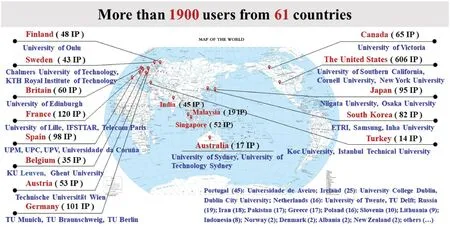
Figure 4.Representative affiliations of CloudRT users all over the world (except China,map no.GS20215442).
A very positive phenomenon is shown in Figure 9.A large number of citations are OA,most of which are gold OA.These OA publications also help promote the OSI to more potential users.Thanks to this positive iteration between OSI and OA publications,the CloudRT tutorial has been recognized as a highly cited paper based on the high citation threshold for the corresponding field and publication year.
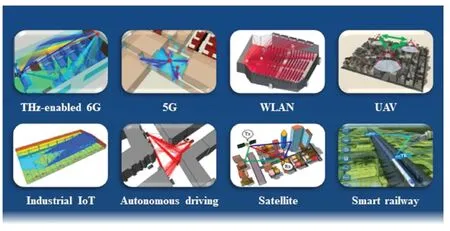
Figure 5.Exemplary use cases of CloudRT.
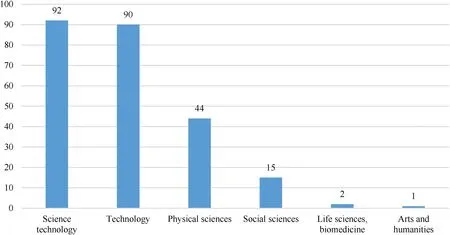
Figure 6.Research areas of the citations of the CloudRT tutorial.
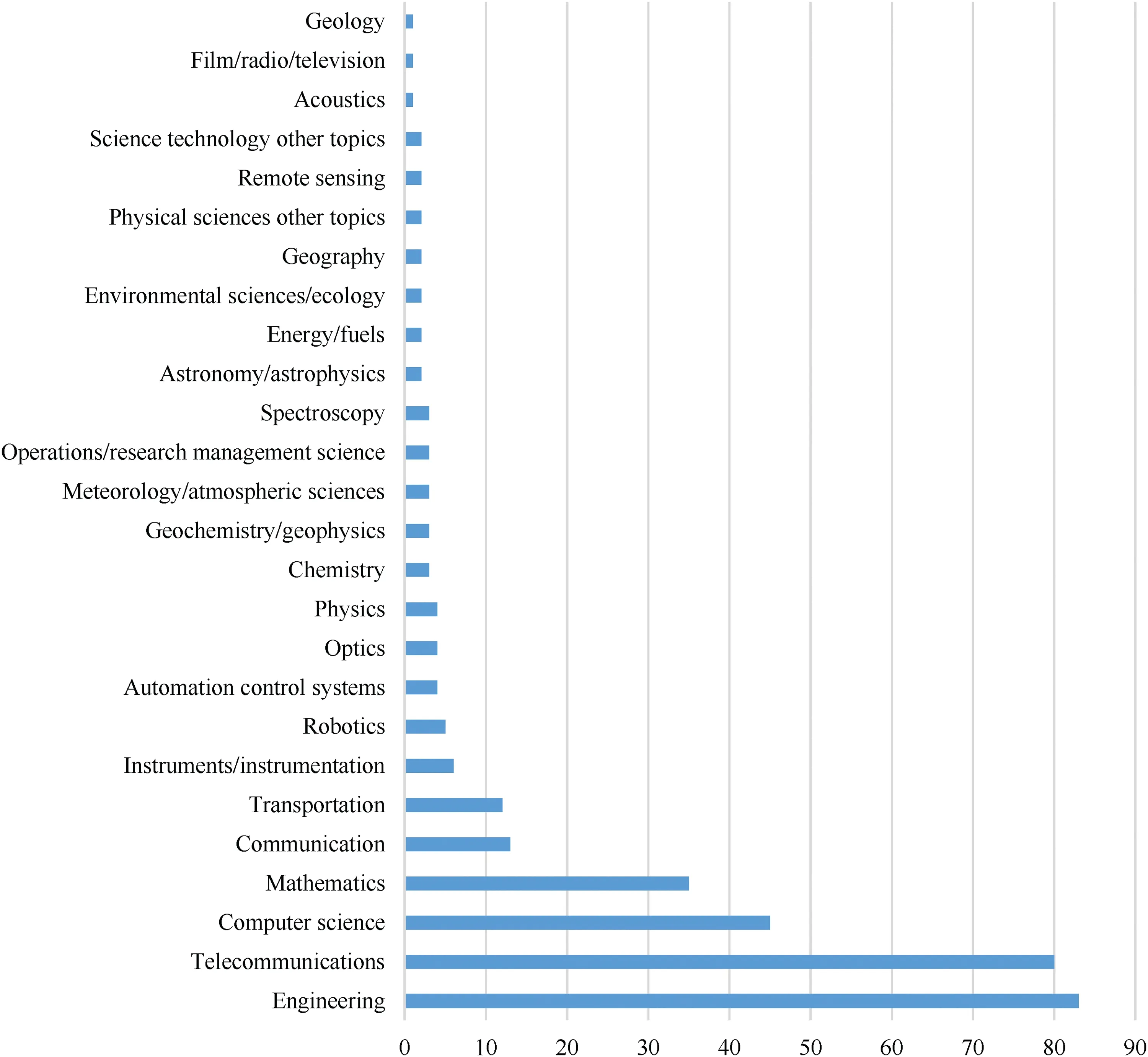
Figure 7.Research directions of publications citing the CloudRT tutorial.
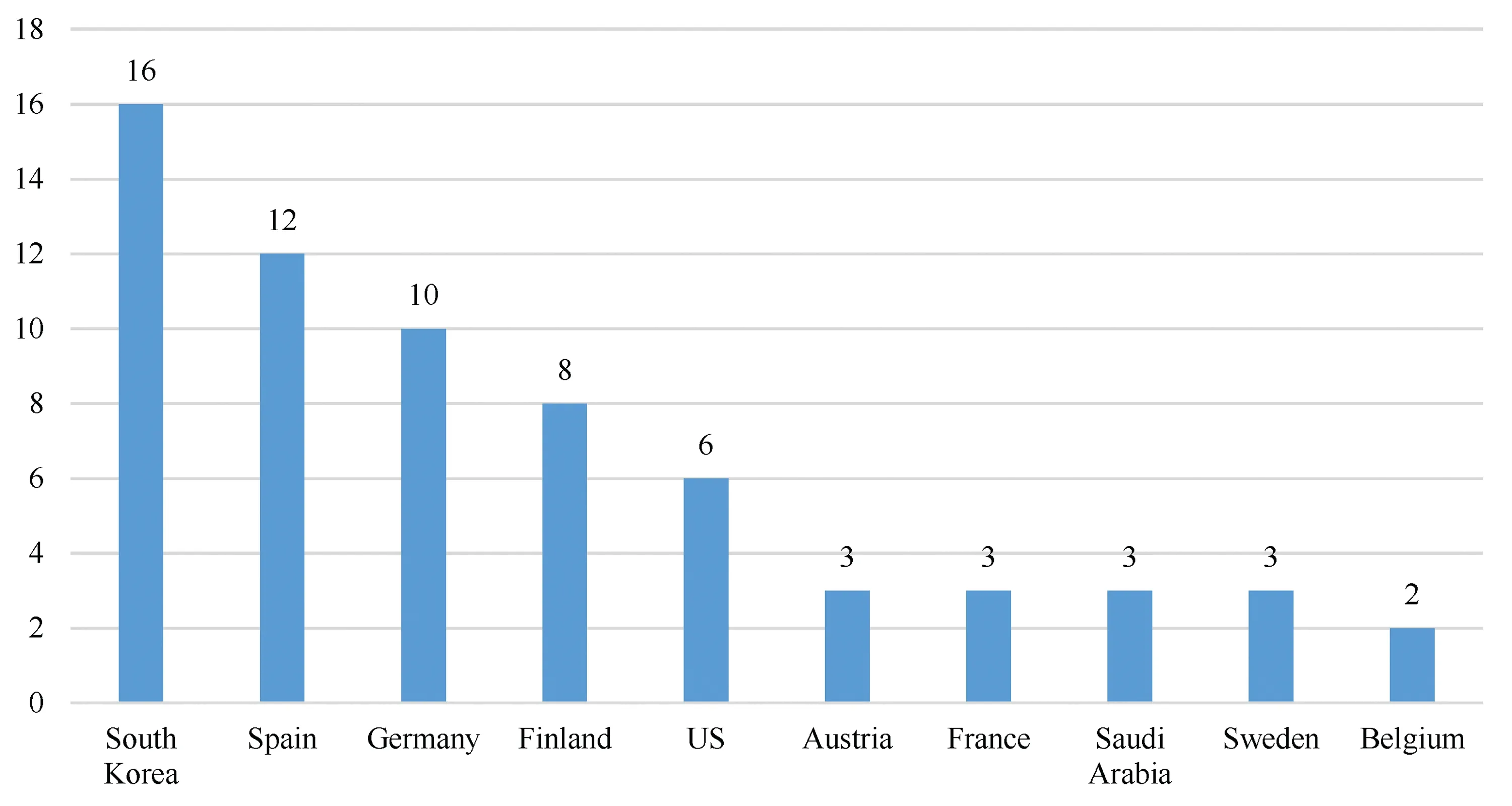
Figure 8.Top 10 countries (other than China) for citations of the CloudRT tutorial.
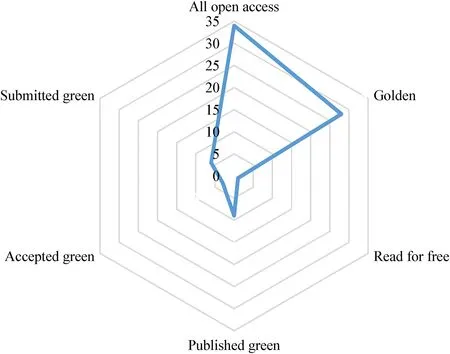
Figure 9. OA status of publications citing the CloudRT tutorial.
4.Practical experience and inspiration
Through operating CloudRT for more than three years,enough practical experience has been accumulated to demonstrate the significance of such an OSI for its stakeholders not only in the scholarly communications landscape,but also in the development of industry and society.
4.1 High utility based on open accessibility
Even more than 10 years ago,the research community had already reached a consensus that deterministic channel modelling approaches such as the RT technique can produce higher accuracy in the prediction of EM wave propagation compared to other models.However,there is still a huge gap between the current development and use of the RT technique and its intended ideal situation.One important reason for that gap is that RT technology has been commercially protected for a long time.CloudRT,as an OSI,provides researchers worldwide with completely free access,greatly enhancing the opportunities for this technology to serve a variety of applications.This demonstrates the tremendous power and value that can be created when a technology that has been commercially protected for a long time is made available to a wider audience.
4.2 International talent development and cooperation
Although most users access CloudRT remotely,top international institutions,such as the Vienna University of Technology,have continued to send PhD candidates onsite to learn how to better use the CloudRT platform (Ademaj et al.,2018).The CloudRT development team has also been invited to give talks at international conferences (such as EuCAP and EuCNC) and to give short courses at European universities (such as the University of Lille)and companies(such as Nokia).This indicates the admirable role of OSIs in promoting international talent development and cooperation.Finally,we note that the users of CloudRT are not exclusively professional researchers but also include young people interested in physics,communications and computing.This also reflects how CloudRT helps to stimulate and interest young people in research and to identify and cultivate the next generation of researchers.
4.3 Driving industry growth
Thanks to its superior openness and resulting flexibility,CloudRT has been leveraged heavily by various industries for digital transformation.For instance,CloudRT was adopted by China Mobile for 5G wireless network planning in Shanghai,Xi’an,Guangzhou and other major cities in China.The wireless network planning for thousands of kilometres of high-speed railway lines in China was also based on CloudRT.Demonstrated at the 2018 PyeongChang Winter Olympics,a millimetre-wave vehicular communication system optimized using CloudRT broadcast the events to numerous passengers on a bus simultaneously (Guan et al.,2019).The world’s first THz wireless communication standard(IEEE802.15.3d-2017)also leveraged the results of CloudRT.This shows that OSIs are not only useful for fundamental research or talent development,but that they can also be used to empower various vertical industries.Advanced technologies such as RT,free from commercial protection,can play a greater role in the development of the digital economy.
5.Challenges and future directions
Similarly to other OSIs around the world,CloudRT faces numerous challenges regarding sustainability.Knowing how to better address those challenges will pave the way towards a better OSI ecosystem.
5.1 Financial sustainability
In a report that collated the results of a survey of infrastructure and services that are part of the European OSI landscape,approximately one-third of respondents (22 out of 64) began each fiscal year without an approved budget,which is a risk to OSI sustainability (Ficarra et al.,2020).CloudRT is also disadvantaged due to a lack of national government grants.This is because CloudRT was selfinitiated by researchers using their knowledge,passion and professional skills as the first investment,rather than applying national government funding.Thus,even now,the greatest sustainability challenges facing CloudRT are related to costs and funding,a lack of resources such as staff or equipment,and the ability to keep up with technological developments and OA.Hence,we should develop a governmental mechanism to identify and invest in OSIs that are not initiated by governments but are shown to be valuable.As suggested by the‘UNESCO recommendation on open science’(UNESCO,2021),those investments should include both financial and human resources,funded collectively by governments,other funders and institutions,reflecting the diverse interests and needs of the research community and society.All this considered,a range of business or revenue models should also be embraced by OSIs to reduce risks to their financial stability.
5.2 Governance and community
CloudRT has demonstrated a sound customer-service orientation by consulting stakeholders on their needs and supporting their applications in various vertical industries.However,continuous efforts should be made to enhance governance capability,such as building an active board,steering group or advisory committee that represents important stakeholders such as researchers or institutions.It will be helpful to organize more online/offline communication platforms(such as workshops and seminars) for OSI operators to share their experiences and learn about preferred practices of good governance from their peers.
5.3 The OSI ecosystem
CloudRT has been very successful in providing OA services for RT simulations.However,in order to realize the comprehensive EM environment simulation or even the EM version of the metaverse,many more additional EM-related techniques,such as EM computation tools (e.g.full-wave analysis),channel sounding and channel emulating,should be coordinated.Therefore,we call on governments to maintain and increase support not only for development activities or for sustaining operations,but also for helping at small scales to build a thriving ecosystem,connecting OSIs to share resources and to upskill users.
6.Conclusions
In this paper,we have presented the practice of operating the CloudRT OSI in China in order to share experience in exploring paths to a better understanding of the OSI ecosystem.Since July 2018,CloudRT—the first and only OA cloud-native HPC RT platform—has attracted more than 7500 users from 62 countries.By tracking citations of the CloudRT tutorial (He et al.,2018),we have been able to analyse the scientific impacts of CloudRT.Based on the citation data from Web of Science,we have found not only that research areas such as science technology,technology and physical sciences have been influenced,but that publications in‘out-of-scope’ areas such as social sciences,life sciences,biomedicine,and even arts and humanities also cite CloudRT.Such an interdisciplinary impact is beyond the expectations of even the inventors and developers of CloudRT.More specifically,the citations of the CloudRT tutorial cover a total of 26 research fields,from the major streams pursued in pure sciences and various applied sciences to very diverse engineering directions,and even vertical industries.This also shows how an OSI can extend its stakeholders from researchers or scholarly communities to vertical industries.
The authors citing the CloudRT tutorial are from 26 countries in Asia,Europe and the Americas,plus Australia and Egypt.Most of the citations are OA,which promotes the OSI to even more stakeholders.This Chinese practice demonstrates how an OSI can gain high utility based on open accessibility,stimulate international talent development and cooperation,and drive industry growth.Nevertheless,the common challenges associated with OSIs have to be addressed,including by improving financial sustainability,enhancing governance and community,and building an OSI ecosystem.Further research into those challenges would help to get to the core of the exact issues at stake and would shed more light on where specific efforts could be made by the OSI and funder communities in the future.
Acknowledgements
We are grateful to Ms Haofan Yi,Mr Pengxiang Xie and Mr Xiangyu Shi for providing all data exported from CloudRT and the Web of Science,as well as the graphic presentations of that data.Our special thanks go to Dr Hui Luo for suggesting the theme and stimulating our discussions.
Declaration of conflicting interests
The authors declared no potential conflicts of interest with respect to the research,authorship and/or publication of this article.
Funding
This work is supported by Beijing Natural Science Foundation (Grant no.L212029) and the State Key Laboratory of Rail Traffic Control and Safety (Contract no.RCS2020ZZ005),Beijing Jiaotong University.
ORCID iD

